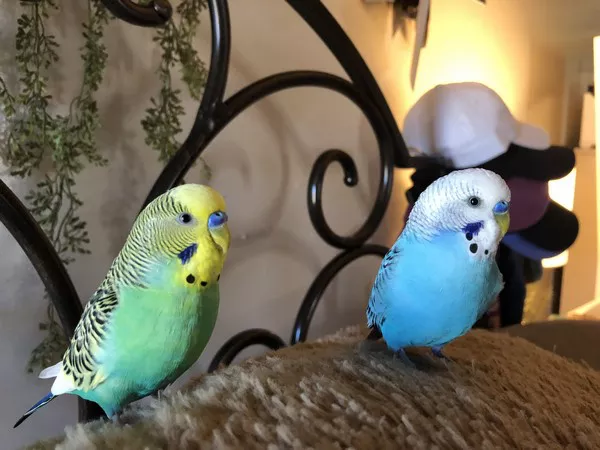Turtles are fascinating and unique reptilian companions that require a well-balanced and nutritious diet to thrive in captivity. While commercial turtle pellets are a staple, supplementing their diet with fruits and vegetables is crucial to ensure they receive essential vitamins and minerals. However, not all fruits and vegetables are suitable for turtles, as some can be harmful or lack the necessary nutrients. In this comprehensive guide, we will explore the diverse world of fruits and vegetables that turtles can safely consume, offering a range of options to keep your shelled friend healthy and happy.
1. Understanding the Dietary Needs of Turtles
Before delving into specific fruits and vegetables, it’s essential to understand the dietary needs of turtles. Turtles are omnivores, meaning they consume both plant and animal matter. Their diet should consist of a balance of protein, fiber, vitamins, and minerals to support their growth and overall well-being. In the wild, turtles feed on a variety of plants, insects, and small aquatic creatures. Captive turtles need a diet that replicates these natural feeding habits to ensure optimal health.
See Also:Can Turtles Safely Enjoy Apples?
2. The Importance of Variety in a Turtle’s Diet
One key aspect of providing a healthy diet for turtles is offering a variety of foods. This includes a mix of commercial pellets, live or frozen prey, and a selection of fruits and vegetables. Introducing variety not only prevents nutritional deficiencies but also keeps your turtle engaged and interested in its meals. A diverse diet is crucial for providing a broad spectrum of nutrients that contribute to the overall health of your turtle.
3. Safe Fruits for Turtles
Several fruits are safe and nutritious for turtles, offering a tasty addition to their diet. Apples, berries, melons, and bananas are excellent choices. These fruits provide essential vitamins like vitamin C, along with natural sugars for energy. It’s crucial to chop or slice fruits into manageable pieces, especially for smaller turtle species, to prevent choking and ensure easy consumption.
4. The Dos and Don’ts of Vegetable Choices
Vegetables play a vital role in a turtle’s diet, supplying essential vitamins and fiber. Leafy greens such as kale, collard greens, and spinach are rich in nutrients. However, some vegetables, like iceberg lettuce, should be avoided due to their low nutritional value. High-calcium vegetables such as broccoli and dandelion greens are beneficial for shell health. Understanding the dos and don’ts of vegetable choices is crucial for providing a well-rounded diet.
5. Balancing Calcium and Phosphorus Intake
Maintaining the right balance of calcium and phosphorus is critical for a turtle’s bone health. While many fruits and vegetables contribute to calcium intake, some also contain higher levels of phosphorus. Achieving the right balance is essential to prevent metabolic bone disease, a common issue in captive turtles. Leafy greens, kale, and edible flowers are excellent choices to boost calcium levels.
6. Offering Safe Treats in Moderation
Treats can be a fun addition to your turtle’s diet, but moderation is key. Safe treats include fruits like strawberries and vegetables like carrot slices. These should be offered sparingly, as excessive treats can lead to imbalances in their diet. Always monitor your turtle’s weight and adjust its diet accordingly to ensure it stays in optimal condition.
7. Avoiding Toxic and Harmful Foods
Not all fruits and vegetables are safe for turtles, and some can be outright toxic. Avocado, for example, contains a substance called persin, which is harmful to turtles. Additionally, rhubarb and certain fruits with pits, such as cherries and peaches, should be avoided. It’s crucial to research and cross-reference before introducing new foods to your turtle’s diet to prevent potential harm.
8. Adjusting Diet According to Species
Different turtle species may have specific dietary requirements. Researching the specific needs of your turtle’s species is crucial for tailoring its diet accordingly. For example, herbivorous turtles may require a higher percentage of leafy greens, while omnivorous species benefit from a more balanced mix of plants and animal matter.
9. Incorporating Seasonal and Locally Sourced Foods
Seasonal and locally sourced fruits and vegetables can be a beneficial addition to your turtle’s diet. These options are often fresher and may contain a broader range of nutrients. However, always ensure that the chosen foods are safe and suitable for your turtle’s species before introducing them into its diet.
10. Consulting with a Reptile Veterinarian
Lastly, consulting with a reptile veterinarian is essential for ensuring your turtle’s diet meets its specific needs. A veterinarian can provide personalized advice based on your turtle’s age, size, species, and overall health. Regular check-ups help monitor your turtle’s nutritional status and address any potential concerns promptly.
In conclusion, understanding what fruits and vegetables turtles can eat is crucial for providing a well-balanced and nutritious diet. By incorporating a variety of safe options, maintaining a proper calcium-phosphorus balance, and consulting with a veterinarian, you can ensure your turtle enjoys a healthy and fulfilling diet that supports its overall well-being. Remember, a well-fed turtle is a happy turtle.
Related Topics:
Can Turtles Truly Live Up to 500 Years?
Can Turtles Live Harmoniously with Koi Fish?
Can Turtles Survive in Cold Water?
























